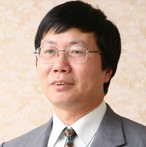Invited Speaker

Dr. Minjiao Lu
Professor, Department of Civil and Environmental Engineering, Nagaoka University of Technology, JapanSpeech Title: Removal of errors in dielectrically observed soil water content caused by temperature effects and its impacts on soil moisture applications
Abstract: Soil moisture is a key variable controlling the exchange of energy and water fluxes between the land surface and atmosphere. Dielectric sensors have been widely used for long term none destructive field soil moisture measurements in small to large scale moisture monitoring networks. However, it is found that these sensors are influenced by soil temperature fluctuations, referred to as temperature effects. An effective temperature correction method for dielectric sensors is important to ensure the accuracy of soil water content (SWC) measurements. This study attempted to develop a general temperature correction method for dielectric sensors which can be commonly used regardless of the differences in sensor type, climatic conditions and soil type without rainfall data. In this work an automated general temperature correction method was developed by adopting previously developed temperature correction algorithms using time domain reflectometry (TDR) measurements to ThetaProbe ML2X, Stevens Hydra probe II and Decagon Devices EC-TM sensor measurements. This temperature correction method was evaluated using 34 stations from the International Soil Moisture Monitoring Network and another nine stations from a local soil moisture monitoring network in Mongolia. Soil moisture monitoring networks used in this study cover four major climates and six major soil types. Results indicated that the automated temperature correction algorithms developed in this study can eliminate temperature effects from dielectric sensor measurements successfully even without on-site rainfall data. Furthermore, it has been found that actual daily average of SWC has been changed due to temperature effects of dielectric sensors with a significant error factor comparable to ±1% manufacturer’s accuracy. Finally, impacts of this removal on rainfall estimation from soil moisture data by SM2RAIN and satellite soil moisture products, AMSR, SMOS and SMAP will be shown.
Biography: Dr. Minjiao Lu holds a B.E. in Hydrology and Water Resources (1982) from Hohai University, Nanjing, China, a M. Eng. in Civil and Environmental Engineering (1985) and a Dr. Eng. in Energy and Environmental Engineering (1991) from Nagaoka University of Technology, Nagaoka, Japan. His research interests include hydrological modelling, water resources, application of remote sensing technique and geographical system, studies of hydrological processes. Recently, he is working on soil moisture observation and application.